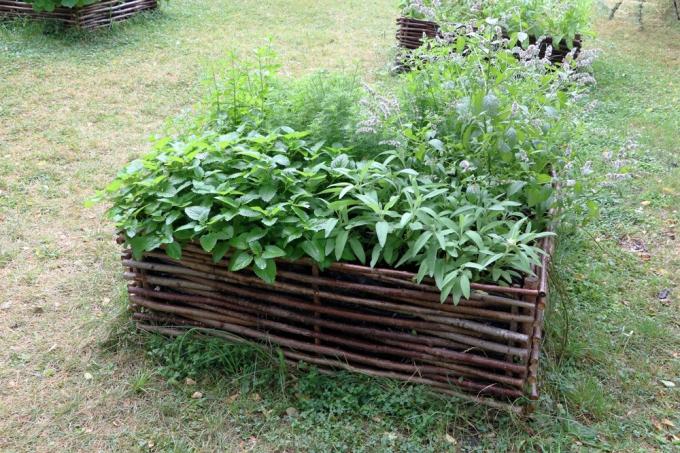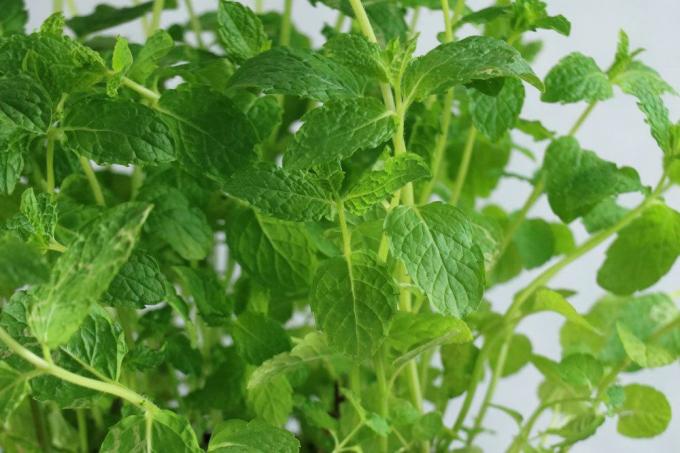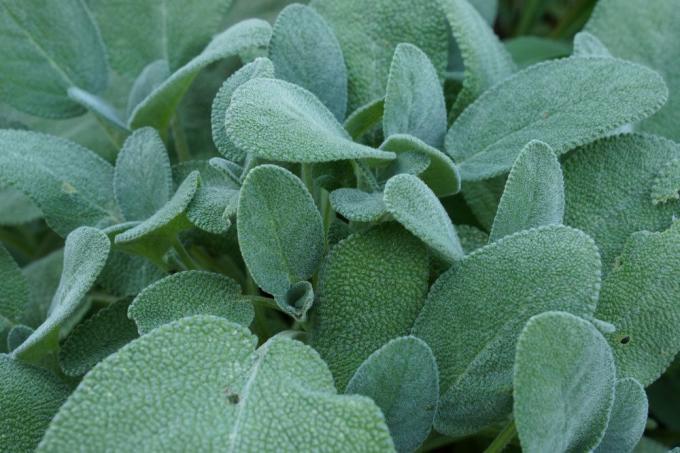
table of contents
- Planting time
- Perennial herbs
- Mediterranean herbs
- Exotic herbs
- plants
Fresh herbs enrich the kitchen and make almost every dish a delicacy. You can buy more or less fresh herbs in almost every supermarket today, but the Herbs from your own garden taste much better, are fresher and, above all, at any time available. A well-stocked herb bed does not even need a lot of space and the need for care is kept within manageable limits.
Planting time
Why the right planting time is important
In order for your herb plants to thrive, they should be planted at the right time. However, the optimal time can vary significantly depending on which herb you prefer. When you should plant depends, among other things, on the prevailing climate in your area, but also on the winter or frost hardiness of the selected herbal plants. In well-run nurseries, potted herbs are usually offered at the time when they can be planted in the garden without any problems, with a few exceptions. Often one of these is the very sensitive basil.

Most types of basil are quite sensitive to temperatures below + 15 ° C. They are better suited for planting in pots or on a south-facing balcony than for the garden bed. Slowly get used to the fresh air before you put basil in the garden or herb bed. Even a cold night can be fatal for him. So wait until it is warm enough at night before planting it out.
Perennial herbs
Hardy or perennial herbs
In general, spring is considered the best time to plant a wide variety of herbs. However, it is highly recommended to plant hardy or perennial herbaceous perennials in autumn for the coming season. The ideal times to repot or replant these herbal plants are September and October. There are several advantages to this. However, perennial cannot generally be equated with absolutely frost-hardy.
If you have already planted your herbs in autumn and if they have grown well before winter, they will sprout again very early in spring. At a time when you can not even think about planting, the first green is already showing on these herbs. The plants are quite resistant to late night frosts but also to prolonged drought, which is not so rare in spring or early summer. So you can start harvesting relatively early.
Good to plant in autumn:
- mint
- Wormwood
- thyme
- tarragon
- mugwort

Benefits of autumn planting
Many herbal plants grow better and faster in autumn than in spring. This is not least due to the autumn and winter wetness of the soil. It closes tightly around the roots relatively quickly, so that small cavities are filled. By spring, many new roots have formed, which can also draw moisture and nutrients from greater depths. This largely prevents drying out or a lack of nutrients.
Mediterranean herbs
- sage
- rosemary
- thyme
Many of the well-known Mediterranean herbs are perennial and partially hardy. With these herbs, your region plays an important role when considering the best time to plant. If you live in a wine-growing region in which the winters are relatively mild, you can plant in autumn. You can then harvest evergreen herbs such as sage or rosemary well into winter or all year round.

However, if you have a long and / or particularly cold winter, then you prefer to plant in spring. Most herb shrubs recover quickly from any frost damage, but it takes some time before they are fully sprouted again and ready for the next harvest. In this case, a frost-free overwintering and replanting in spring is recommended.
Exotic herbs
- Lemongrass
- Curry herb
- coriander
- Thai basil
Even with exotic herbs, you should distinguish between frost-hardy and sensitive herbs and choose when to plant them accordingly. Thai basil and coriander are among the so-called annual herbs that you should plant in spring. They do not tolerate frost. So plant them in the garden in the second half of May at the earliest. Be sure to pay attention to the weather report. If isolated night frosts are expected, postpone the time for planting by a few days.

When to plant or sow the most important herbs:
- Savory: sow and plant from May
- Dill: sow from April
- Tarragon: Sow Russian tarragon from April, plant French tarragon from the end of May
- Garden cress: sow in the garden from March, indoors all year round
- Chervil: sow from the end of March
- Coriander: sow from April
- Lavender: planting from May
- Lovage: sow and plant in April
- Marjoram: sowing and planting only after the ice saints
- Parsley: sow from mid-March
- Rosemary: planting from April
- Sage: planting from April / May
- Chives: Sow in the garden from March, indoors all year round
- Thyme: planting from the end of April
- Lemon balm: sow and plant from May

plants
When is the best time of day to plant herbs
Of course, gardening is most fun in sunshine and warmth, but this weather is not so good for planting. An overcast, only moderately warm day is ideal for this. That makes it easier for the plants. They are less stressed, grow more easily, and recover quickly. This is especially true for herbs that prefer a warm, sunny location. Planted in the midday heat and not sufficiently used to it, these herbal plants burn quite quickly.
In the early morning hours it is usually still relatively cool and the nighttime humidity is still present. If the day is to remain overcast and rather cool, you can plant your herb bushes in the morning. But if it gets very warm, young herbal plants in particular will be limp in the afternoon at the latest. Therefore, it is better to postpone planting until the (early) evening. The soil was warmed up all day long, which also benefits the herbs. Water the young herbs well. The moist soil closes tightly around the roots and the plants regenerate overnight.

Advantages of evening planting:
- The ground is warmed up
- no drying up in the midday sun
- Young plants regenerate overnight
